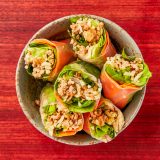Bam Paweenwithayakoj worked quietly, her stand tucked between piles of pomelos and mounds of rambutans, the perfume of Bangkok’s sprawling Or Tor Kor Market, an indoor hub of sizzling woks and produce. She was making salad rolls, Thailand’s answer to the rice paper-wrapped fresh spring and summer rolls made across the region.
Her mother started the process, smearing ladles of milky rice batter across a round of cotton fabric stretched taut over a cauldron of steaming water. The smear cooked, covered, for 20 seconds, then she used a thin wooden stick to scrape off the now-solidified rice wrapper and spread it flat on an oiled metal work surface.
That’s when Paweenwithayakoj took over, spooning into the center of each a mixture of rice, cooked ground pork, chives and shallots, rolling, wrapping and tucking it all into tight, translucent bundles. Served with a sweet dipping sauce and crispy fried garlic flakes, the rolls were tender and meaty and bursting with sweet-savory-spicy-garlicky flavors.
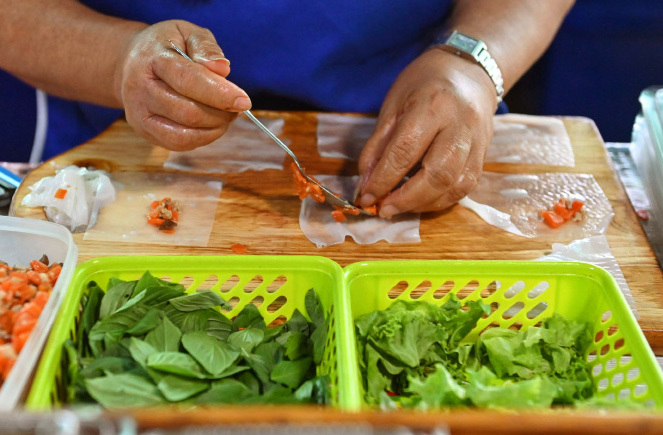
They were wonderful. They also confused me. So let’s pause for a moment on the nomenclature.
The term spring roll traditionally referred to rolls, particularly from Vietnam, made with wheat flour wrappers that were fried until crunchy. A similar dish in Chinese American cuisine is called egg rolls. Summer rolls—called salad rolls in Thailand—were the fresh alternative, made with rice paper wrappers and herbs in the filling.
But in much of the world, these terms are confusingly interchangeable. In fact, Paweenwithayakoj used none of them. In a nod to her mother’s Vietnamese roots, she skips most vegetables and adds the typical Thai seasonings of garlic, plus soy and fish sauces. She calls them, simply, Vietnamese rolls.
Terminology aside, my other issue with salad/summer/spring rolls is flavor. In the U.S., fresh rolls tend to be grassy affairs stuffed with vegetables that add crunch, but little flavor. Without a potent dipping sauce, they can be pretty dull.
Not so in Thailand. As I ate my way around Bangkok, I was impressed by the variety of fillings and pops of flavor they delivered. The best was at a market in Samut Sakhon, a small town an hour southeast of Bangkok. At a stand named Khunwin (Smile!), Darunee Posawat has been selling his version of Thai salad rolls for more than 16 years.
His rolls were an explosion of flavors and textures. Like Paweenwithayakoj’s rolls, the base was pork seasoned with fish sauce, soy sauce and garlic. But Posawat added lettuce, fragrant holy basil and lightly cooked sweet carrots, all bundled in tender rice wrappers, each a single bite. Paired with his sauce—green chilies, garlic, lime juice, fish sauce, soy sauce and sugar—they were the best fresh rolls I’d ever eaten.
For Milk Street’s version, we borrowed lessons from Paweenwithayakoj—we loved her use of rice in the pork—as well as Posawat—his vegetables and herbs perfectly balanced the rich savoriness of the pork. And we couldn’t get enough of his dipping sauce. The result was a flavor-packed fresh roll, whatever you opt to call it.
Thai Salad Rolls with Green Chili Dipping Sauce
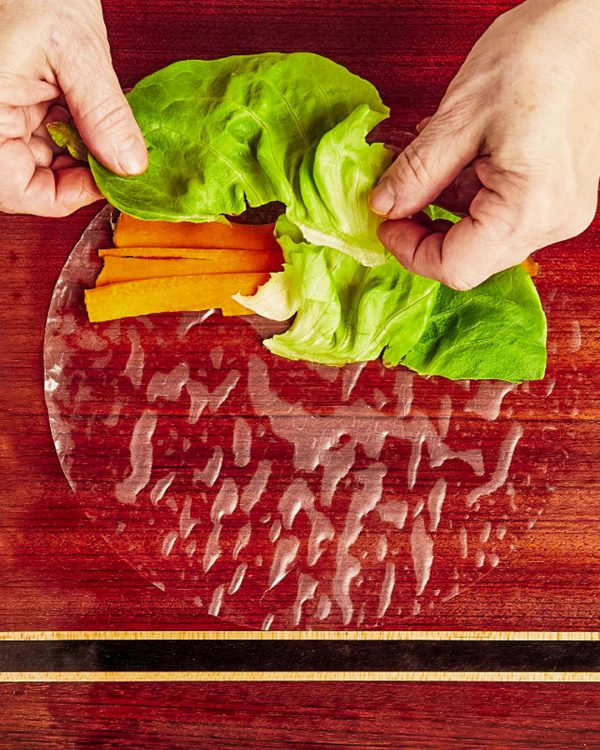
1. Soak 1 rice paper wrapper in warm water until starting to soften, about 5 seconds. Lay it flat on a cutting board or countertop. Lay 3 carrot ribbons across the bottom third of the rice paper. Top with lettuce, pressing the spines to flatten the leaves.
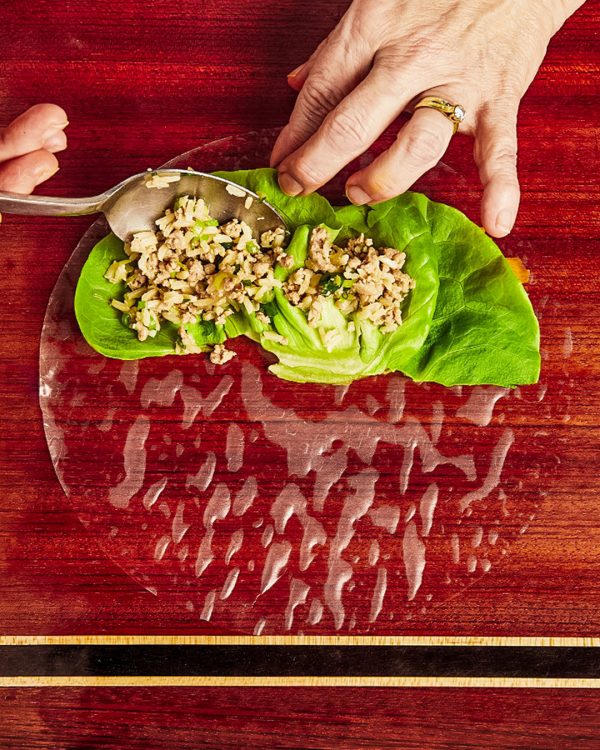
2. Top the lettuce with ¼ cup of the cooked pork filling (which should be cooled, as residual heat can wilt the greens and soften the rice paper); top it with a bit of basil. Be careful not to overfill the roll, which can make wrapping difficult.
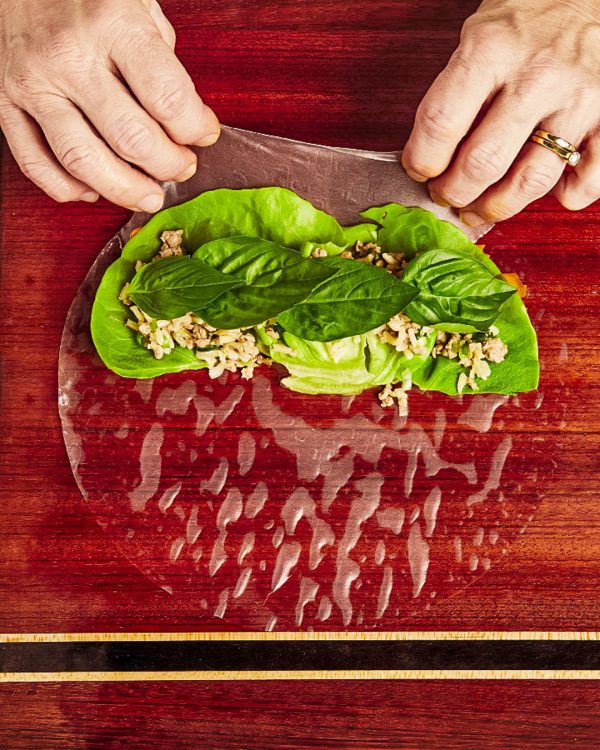
3. To fold, lift the edge of the wrapper closest to you up and over the edge of the fillings. Tuck the lower part of the wrapper around the fillings and roll tightly, just until the fillings are enclosed.
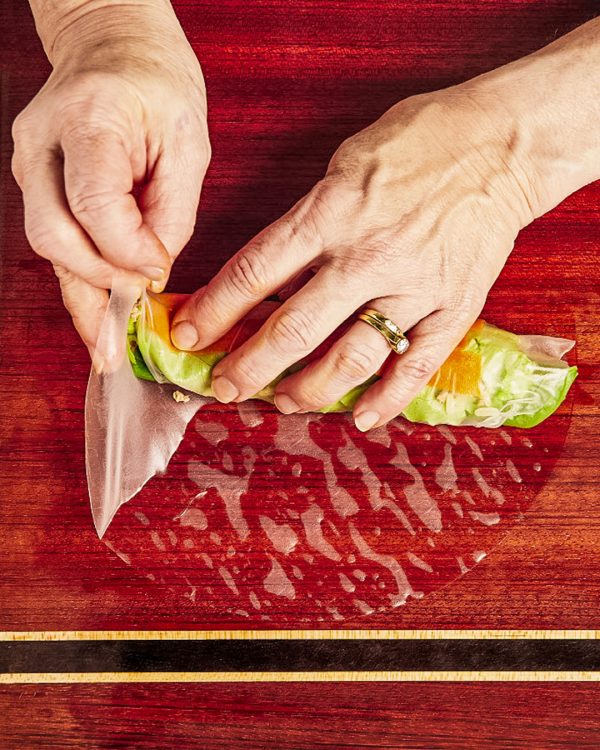
4. Fold in the sides of the wrapper over the filling, then continue rolling to create a tight bundle. Set on the prepared baking sheet and cover with plastic wrap.
